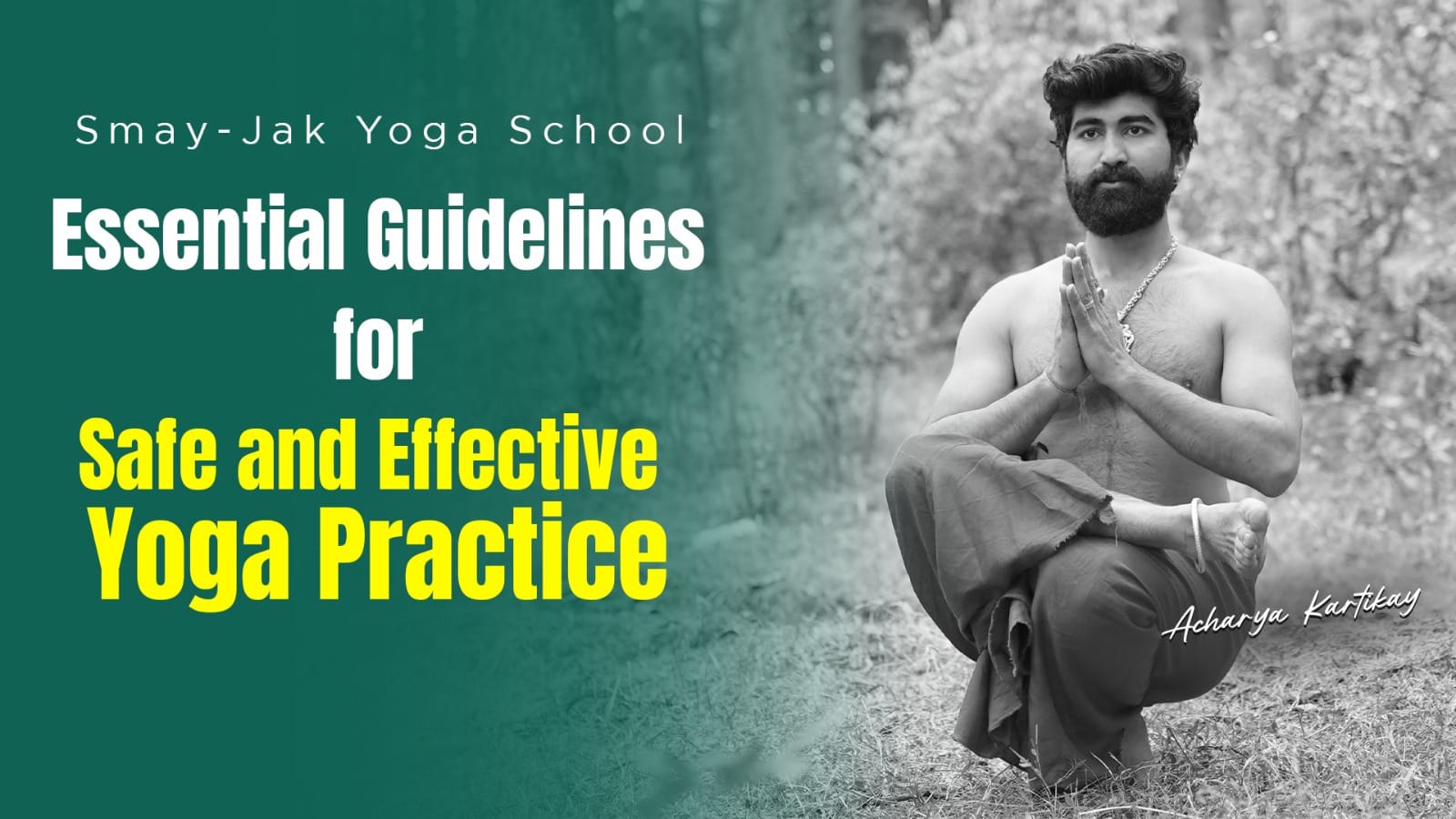Do’s:
- Śauca (Cleanliness): Ensure cleanliness of your surroundings, body, and mind before starting your yoga practice.
- Practice on an Empty Stomach: Perform yoga on an empty stomach. If feeling weak, a small amount of honey in lukewarm water can help.
- Empty Bowels and Bladder: Make sure your bladder and bowels are empty before beginning any yogic practices.
- Begin with a Prayer or Invocation: Start your session with a prayer to create a peaceful atmosphere and relax the mind.
- Move Slowly and with Awareness: Practice asanas in a relaxed, slow manner, staying aware of your body and breath.
- Warm Up: Always begin with stretches or loosening exercises to prevent injury.
- Progress Gradually: Move into advanced postures only with practice and patience.
- Eat Satvik Food: Aim for a Satvik diet, avoiding meat, eggs, onions, garlic, and mushrooms.
- Stay Hydrated: Drink water before practice to stay hydrated.
- Wear Comfortable Clothing: Use light, comfortable cotton clothing that supports movement.
- Choose a Ventilated Space: Practice in a well-ventilated room with good airflow.
- Use a Good Yoga Mat: A mat with good grip ensures stability during asanas.
- Mind Your Breathing: Focus on breathing through the nostrils unless instructed otherwise.
- End with Relaxation: Cool down with relaxation techniques, ensuring a complete session.
- Don’t Hold Your Breath: Avoid holding your breath unless explicitly stated in the practice.
- Gentle Movements: Avoid giving jerks or straining your body.
- Practice Regularly: Yoga requires persistence and regularity to see benefits.
- Know Your Limitations: Keep in mind contraindications for specific yoga practices.
- End with Meditation: Conclude your session with meditation, silence, or a peace invocation.
For spiritual seekers, the ethical guidelines in yoga, such as the Yamas (restraints) and Niyamas (observances), are critical. The Niyamas include:
- Śauca: Purity of mind and body.
- Santoṣa: Contentment and acceptance.
- Tapas: Discipline and perseverance.
- Svādhyāya: Self-study and introspection.
- Īśvarapraṇidhāna: Contemplation of a higher power.
Don’ts:
- Avoid Yoga When Exhausted or Ill: Don’t perform yoga in a state of exhaustion, illness, or stress.
- Pause During Menstruation: Women should avoid regular asanas during menstruation. Opt for relaxation and pranayama instead.
- Don’t Practice Right After Eating: Wait 2-3 hours after meals before doing yoga.
- No Immediate Shower or Food: Avoid eating, drinking, or showering for 30 minutes after your session.
- Rest After Illness or Injury: After surgeries, sprains, or fractures, refrain from yoga until cleared by a health expert.
- No Strenuous Exercises Post-Yoga: Avoid strenuous activities immediately after yoga.
- Watch the Weather: Don’t practice in extreme weather conditions, whether too hot, cold, or humid.
For those on a spiritual path, it’s essential to follow the Yamas, which include:
- Ahiṃsā: Nonviolence.
- Satya: Truthfulness.
- Asteya: Non-stealing.
- Brahmacharya: Sexual restraint.
- Aparigraha: Non-possessiveness.
Other attributes like Patience (Kṣamā), Fortitude (Dhrti), and Measured Diet (Mitāhāra) are also important. Always consult a health expert if you have a medical condition or are pregnant before beginning yoga.











